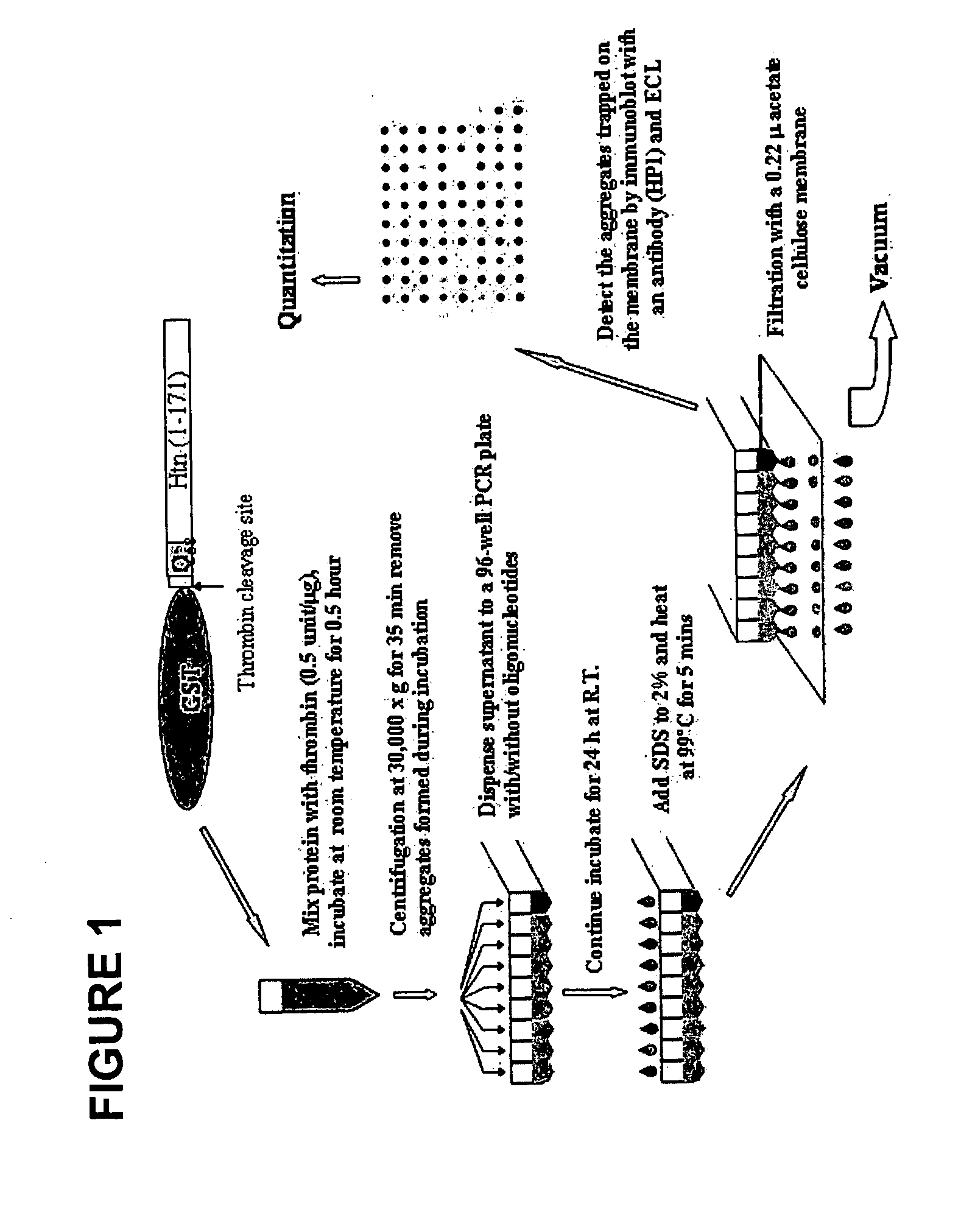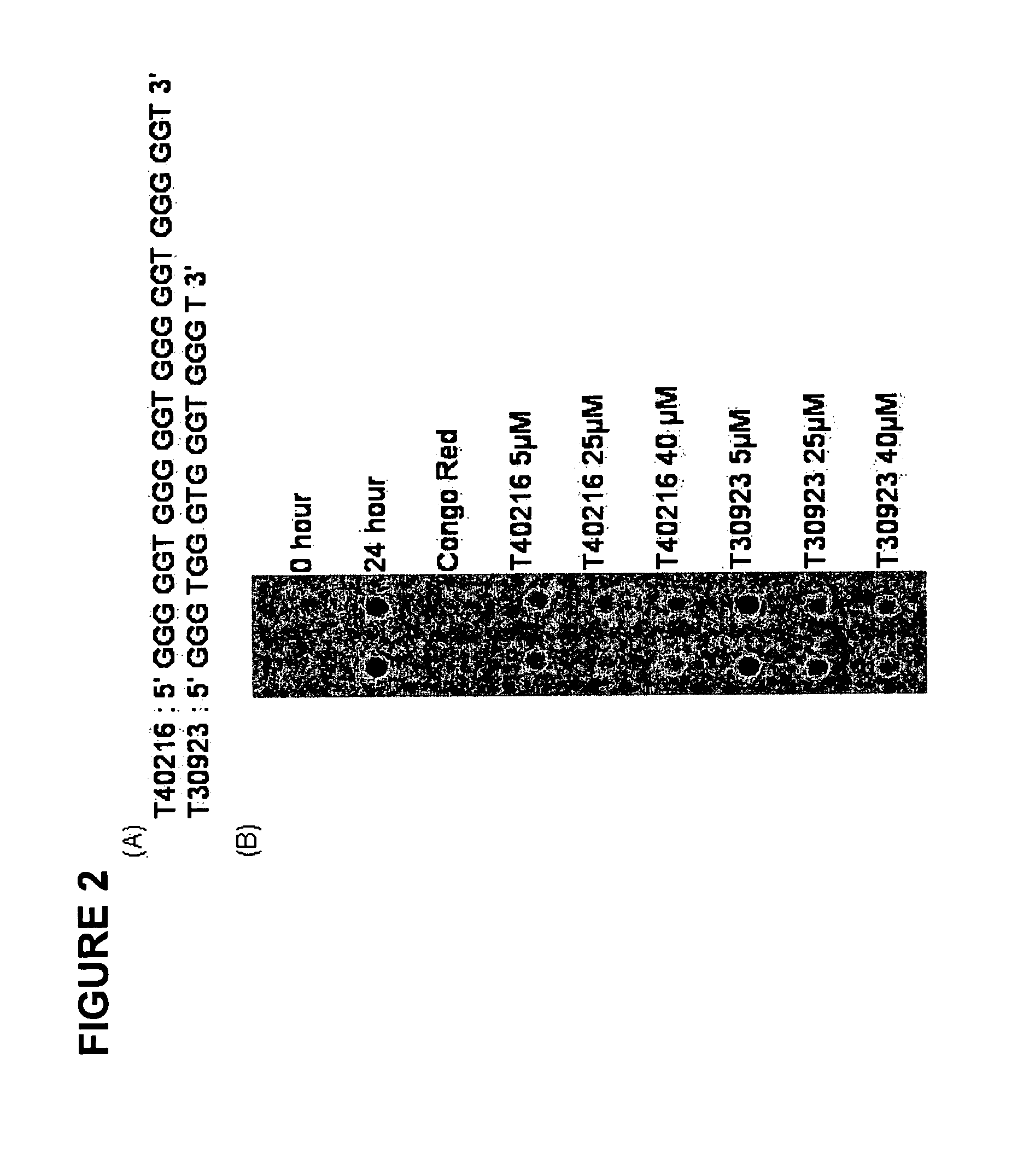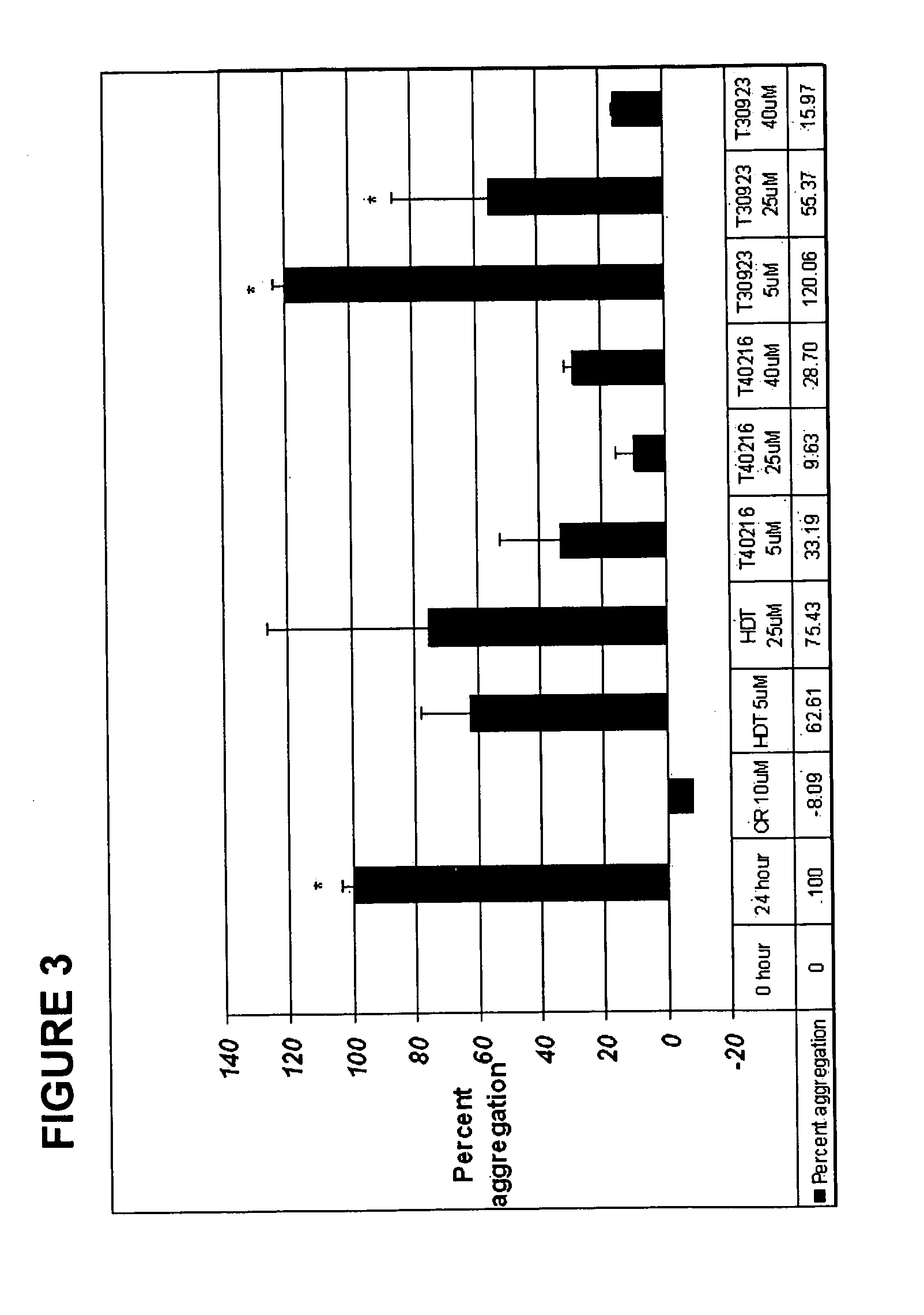G-rich polynucleotides for the treatment of huntington's disease
a polynucleotide and huntingtons technology, applied in the field of oligonucleotide compositions, can solve the problems of increasing the potential for neurotoxicity, nucleating protein aggregation, and interfering with a multitude of normal cellular functions
- Summary
- Abstract
- Description
- Claims
- Application Information
AI Technical Summary
Benefits of technology
Problems solved by technology
Method used
Image
Examples
examples
[0121] The original observation that ODNs bearing random sequences reduced Htt aggregate formation prompted a closer examination of a potential role for ODNs in HD therapy. We chose to utilize a biochemical / immunochemical assay system that enables rapid screening of compounds / molecules for the inhibition of Htt aggregation. In this test, ODNs (40 μm) were mixed with purified mutant Huntington for 24 hours and then passed through a cellulose acetate membrane filter (0.2 μm). The percentage of aggregates remaining on the filter was detected by immunochemistry using a primary HD-antibody and a secondary anti-rabbit antibody conjugated to alkaline phosphatase. Included in these experiments was a positive control, Congo Red. Two ODNs, HD3S / 53 (all DNA, 53-mer) and HDR / 25NS (all RNA, 25-mer), were found to be effective inhibitors. Fundamentally, the results established that ODNs can be used to inhibit Huntington aggregation. These molecules however ranged in size up to 53 bases and some w...
experimental examples
[0133] Variations in the structure of the ODNs. The aptameric GRO molecule, HDG (SEQ ID NO:3), is 20 bases in length, and is composed of all G nucleotides. While it exhibits robust activity thus so far, we cannot assume that HDG is the most optimal vector. Thus, we changed HDG in a methodical fashion and tested variants in the biochemical screen. The chart below outlines strategic plans and the rationale for modifying HDG:
VariableSpecific ChangesRationaleA.Length20→18→16 . . . 4Shorter ODNs may bebases, length aremore capable transitingchanged in steps of 2the BBBB.CompositionGuanosine DNA basesRNA can adopt similarare tested first andstructural changes in2′-O-methyl RNAtracts of G residues.bases (all G′s)2′-O-methyl RNA isare tested in turnmore stable thanunmodified RNAC.SequenceAll G residue tractsG-quartet structuresare interrupted withare also known to formTs at variouswith T residues at 3rdintervals i.e.and 4th positions: someGGGTGGGTGGGT etc.with greater stabilityD.ChemicalG...
example 2
[0139] Biochemical analyses of GROs. We chose to utilize a biochemical / immunochemical assay system that enables rapid screening of compounds / molecules for the inhibition of aggregation. In this test, ODNs were mixed with purified mutant Htt fragment for 24 hours and then passed through a cellulose acetate membrane filter. The percentage of aggregates remaining on the filter was detected by immunochemistry using a primary Htt-antibody and a secondary anti-rabbit antibody conjugated to peroxidase. Signals from the SDS insoluble aggregates were scanned and quantified. A diagram of this assay, established by Wang et al. (2005), is presented in FIG. 1. In all preparations of the mutant protein, thrombin-directed cleavage of GST-Q58Htn was allowed to proceed for 45 minutes prior to the addition of the GRO. This cleavage generates an amino terminal polyglutamine fragment consisting of 171 amino acids of the human huntingtin with tract of 58 glutamine residues. The fragment is fused to GST ...
PUM
| Property | Measurement | Unit |
|---|---|---|
| Fraction | aaaaa | aaaaa |
| Fraction | aaaaa | aaaaa |
| Fraction | aaaaa | aaaaa |
Abstract
Description
Claims
Application Information
 Login to View More
Login to View More - R&D
- Intellectual Property
- Life Sciences
- Materials
- Tech Scout
- Unparalleled Data Quality
- Higher Quality Content
- 60% Fewer Hallucinations
Browse by: Latest US Patents, China's latest patents, Technical Efficacy Thesaurus, Application Domain, Technology Topic, Popular Technical Reports.
© 2025 PatSnap. All rights reserved.Legal|Privacy policy|Modern Slavery Act Transparency Statement|Sitemap|About US| Contact US: help@patsnap.com



